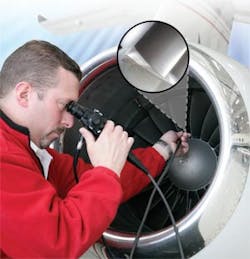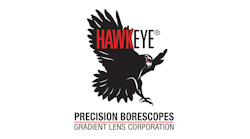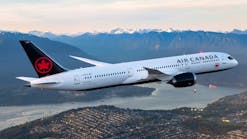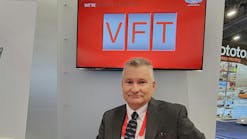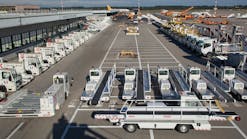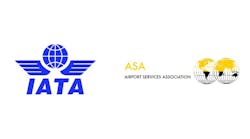It seems that every year, aircraft maintenance practices and procedures become more technologically sophisticated. Despite this sophistication, it’s still often necessary to simply look at aircraft engine parts and mechanical assemblies via visual inspection. That’s not to say technology doesn’t enter into visual inspection. Borescopes, based on technologically advanced optical systems, are a frequent choice in inspecting mission-critical parts or components.
For most combustion chamber and turbine blade inspection needs, borescopes are an invaluable tool. Borescopic inspection becomes imperative when certain factors exist:
- Limited access: Deep bores, cross holes or undercuts, or parts located in inaccessible sections of an aircraft, require using borescopic inspection to determine key characteristics.
- Critical components: The part or component is mission critical — for instance, mating surfaces with a gasket between them that might prevent leakage in a fuel system.
- Unspecified troubleshooting: When specified characteristics are not well defined — corrosion, blockages, debri, and the like, there’s no substitute for the human brain to identify what can be defects.
A scope for all uses
The two most common types of borescopes used in aircraft inspection are rigid and flexible borescopes.
Rigid borescopes offer the highest resolution and brightest images, and are more durable and more economical. These scopes use traditional lens-relay systems to transmit images. The lenses are usually assembled inside a rigid stainless-steel tube. If access into the part to be inspected allows the use of a rigid borescope, it is the best investment. Rigid borescopes are used when the area to be inspected is reachable in a straight path, as in many machined parts, tubes, and some molded parts. For many turbine blade and combustion chamber inspections, a rigid borescope is the best bet.
If the pathway to the inspection area is indirect — through a curved pipe, bent tube, or complex casting, for instance — users should opt for a flexible borescope. These scopes employ a fiber-optic image bundle housed inside a flexible sheath. The resolution of a flexible borescope is defined by the number of optical fibers in the instrument’s imaging bundle; this number can range from 10,000 to 30,000 pixels. Flexible borescopes are not the answer to all user needs. Because of the fiber optics, the image quality is not as good as rigid borescopes. Also, flexible borescopes can be expensive, more fragile, and sometimes hard to handle. However, even with these limitations, excellent-quality flexible borescopes are available and the need for flexibility is often the most important factor.
Scopes in maintenance
In the aircraft maintenance world, mechanics use borescopes primarily as part of scheduled maintenance. Specialty service and repair facilities, in particular, use borescopes frequently. Also, a number of manufacturers and the FAA require borescopic inspection of certain parts, and some manufacturers specify borescopic inspection to get baseline data for trend/condition monitoring.
Licensed A&P-rated mechanic Jim Thayer is director of maintenance for USAirports Air Charter and USAirports Flight Support Certificated Repair Station. He notes that borescopes often help him “confirm what I already suspected.” For instance, he says, “If the engine starts to lose power, you might expect inlet or exhaust issues. Using a borescope, I have found damage in those areas that I otherwise would only have found by disassembly.”
A typical turbine engine offers several avenues for borescopic inspection. In the combustion chamber, manufacturers specify inspection criteria, but issues include corrosion, cracking due to heat, and shifting of the chamber. More particularly, borescopes are frequently used to inspect:
- Turbine blades (corrosion, Foreign-Object Damage (FOD))
- Fuel nozzles (corrosion, physical damage, carbon buildup)
- Burner can (cracking, hot spots indicating uneven flame distribution, corrosion on housing welds)
- Igniter (corrosion, although this part is usually relatively easy to remove for inspection with the naked eye)
- Air cooling holes (corrosion)
On wing, mechanics can examine compressor and turbine blades for FOD and corrosion.
Piston engines, in contrast to turbine engines, are reasonably simple to pull apart for visual inspection. Yet borescopic inspection has a purpose here, as well: It can eliminate guesswork. Viewing parts like piston crowns, valves, and valve seats or injectors with a scope is a fail-safe way to confirm their flight-worthiness. It also saves time. Even though piston-engine disassembly is relatively easy, some eight- or 10-cylinder piston engines can take hours to disassemble. Borescopes offer a quick and easy check in comparison.
No matter what the engine type, borescopes are also useful for inspecting primary structures like the wing or fuselage or for in-wing inspection. Some appropriate subjects for borescopic inspection:
- Physical damage in ailerons.
- Electrical system, usually accessible for inspection with the naked eye but occasionally with limited access. For instance, explains Thayer, “If you suspect that wires you can see are being chafed by metal on the backside of the aircraft structure or that incorrect hardware — screws that are too long, for instance — are being used, you could use a scope to see further.”
- Mechanical systems such as the fuel shutoff linkage.
Exceptions exist, of course. “You can’t really see anything in the fuel bladder with a borescope because the bladder just absorbs the light,” says Thayer.
Other applications
Aircraft maintenance is a key application for borescopes, but they also play specific roles in visual inspection at the manufacturing level. Some examples:
- A designer and manufacturer of engines had a backlog of 3,000 helicopter fuel control units needing inspection. Each unit required hours to disassemble and reassemble. By using rigid borescopes to inspect the units without disassembly, the firm quickly eliminated the backlog. It now uses the scopes for routine inspection every 800 hours.
- A manufacturer that makes fittings for aircraft hydraulic systems had to reorganize its manufacturing processes after its largest customer refused to buy fittings with minor, common imperfections on internal surfaces. Machinists now use rigid borescopes to deliver the needed clear, sharp views of interior surfaces and are sturdy enough for a machine-shop environment.
A common theme among these applications often is fluid flow. Fuel, hydraulic fluid, water, oil — the parts through which any of these vital fluids flow must be free of burrs and/or contaminants that can clog and possibly limit the flow. The parts also must not have cracks through which fluid could leak.
Multiple benefits
The benefits of using borescopes are numerous:
Without borescopes, mechanics would be left with disassembly as their only inspection option for inaccessible areas. That fact has specific implications for commercial and charter airlines, perhaps best expressed in the saying “time is money” — certainly a truism in aviation. Disassembling a small jet engine could take two experienced mechanics eight to 10 hours. Using a borescope, one mechanic might spend an hour on the same inspection. And, disassembly means more downtime for aircraft, which make money for airlines and charter services only when they’re in the air.
There is no substitute for the human eye and brain working together to solve a problem. If a parameter is off — perhaps the engine is running hotter than normal, or its speed is off — the mechanic knows a problem exists, but a borescope can pinpoint where on the inside of the engine the damage lies.
Borescopic inspection is easy to learn and requires minimal training. What inspectors see through a scope is usually easily recognizable, requiring no interpretation or guesswork. The proficiency that comes with experience allows mechanics to identify subtle issues like the shifting of a burner can, for instance, that might otherwise go unnoticed.
Dr. Douglas Kindred is president of Gradient Lens Corp. (www.gradientlens.com), which designs, engineers and manufactures precision optics, and optical instruments.
